 Copyright 2010, 2012
Copyright 2010, 2012
Creative Publishing international, Inc.
400 First Avenue North, Suite 300,
Minneapolis, Minnesota 55401
1-800-328-3895 www.creativepub.com All rights reserved. 10 9 8 7 6 5 4 3 2 1 Digital Edition: 978-1-61059-618-3
Softcover Edition: 978-1-5-8923-524-3 Library of Congress Cataloging-in-Publication Data Hubert, Margaret.
The complete photo guide to knitting : basics, stitch patterns, and instruction for all methods of knitting / Margaret Hubert.
p. cm.
Includes index.
Summary: "References for knitters; includes instructions and diagrams for 200 stitch patterns, basic information about how to knit, plus 20 projects"--Provided by publisher.
ISBN-13: 978-1-58923-524-3 (soft cover)
ISBN-10: 1-58923-524-X (soft cover)
1. Knitting. 2. I. Title. Title.
TT820.H83253 2010
746.432041--dc22 2010000691 Photographer: Corean Komarec
Photo Coordinator: Joanne Wawra
Cover & Book Design: Kim Winscher
Page Layout: Danielle Smith
Technical Editor: Rita Greenfeder
Copy Editor: Ann Wilson Visit www.Craftside.Typepad.com for a behind-the-scenes peek at our crafty world! Due to differing conditions, materials, and skill levels, the publisher and various manufacturers disclaim any liability for unsatisfactory results or injury due to improper use of tools, materials, or information in this publication. All rights reserved. No part of this work covered by the copyrights hereon may be reproduced or used in any form or by any meansgraphic, electronic, or mechanical, including photocopying, recording, taping of information on storage and retrieval systemswithout the written permission of the publisher. The Complete Photo Guide to
KNITTING


Dedication For my ever-growing family, who constantly fill my life with joy. Acknowledgments I have a long list of people to thank for their help in putting this book together. Many thanks to the following yarn companies for the generous donation of their yarns for the projects and swatches in the book and for their continued support of designers everywhere: DJ International Inc., Knitting Fever, Lion Brand Yarn, Patons, Plymouth Yarn Company Inc., and Tahki Stacy Charles.
Thanks to Sasha Kagan, Debbie New, Judy Pascale, Beth Brown-Reinsel, and Myra Wood for sharing their expertise in special knitting techniques. Thanks to Jeannine Buehler, Paula Alexander, Frances Feery, and Marie Stewart for helping me to make many of the samples for the book. Last, but by no means least, a very big thank you to my editor, Linda Neubauer. You are the best editor ever! CONTENTS

Introduction It always amazes me that so many lovely and intricate patterns can be made by using yarn, two knitting needles, and a combination of knit and purl stitches. I do not remember learning to knit; it seems that I always knew how. As a child, I would go to my mother with two pencils in hand, asking her to put stitches on the pencils so that I could knit.
I haunted yarn shops at a very young age, and it was a yarn shop owner who taught me to correctly interpret knitting patterns and how to crochet. Those wonderful experiences in local yarn shops encouraged me to open my own shop many years later. My love for knitting and appreciation for various yarns and stitch patterns led me to write this book, which covers topics from knitting basics and stitches to specialty knitting methods. The Knitting Basics section is packed with details about how to knit. It is intended to help beginner knitters learn the craft, but also to refresh seasoned knitters memories about certain techniques. After all, who among us memorized the steps for grafting after our first attempt? In knitting there are many options for casting on stitches, increasing and decreasing, binding-off, and seaming, as well as different reasons for using every technique.
Adding these techniques to your knitting repertoire will make you a more confident knitter. The Stitch Patterns section is a collection of nearly 200 stitch patterns and showcases the vast range of knitted fabrics you can create. I learned some of the stitch patterns many years ago. Some were taught to me by my mom, while I learned others from an old family friend who had a knitting encyclopedia in her brain. I learned other stitch patterns from books and knitting patterns that I studied over the years. Some stitch names have been handed down through generations of knitters; I made up some of the names to fit what I thought the stitches look like.
I have sorted the stitches into categories, such as laces, textures, or ribs, but many of the stitches fit more than one category. You can dramatically change the look and drape of a stitch by changing yarn and needle size, experimenting as you go to get the look and feel that you want. Projects arranged throughout the book showcase at least one stitch from each group. In the Specialty Knitting Methods section, fellow knit designers contribute projects that highlight their areas of expertise. Contributors and their knitting methods include Judy Pascale, Knitting with Beads; Myra Wood, Crazy Lace Knitting; Sasha Kagan, Intarsia; Beth Brown-Reinsel, Twined Knitting; and Debbie New, Ouroboros Knitting. These designer-provided projects give you opportunities to try new knitting techniques.
I hope that knitters will use this book, along with the vast variety of yarn and tools and incredible array of stitch pattern options, to create their own wonderful designs. Enjoy! 


History of Knitting
Knitting, a simple technique for producing fabric from a strand of yarn or thread using two needles, is a fascinating hobby embraced by millions the world over. Unlike weaving, knitting does not require a loom or other large equipment. Knitting projects are small and portable, which made knitting especially appealing to nomadic people and continues to make knitting appealing to todays textile hobbyists. The word knitting comes from the Anglo Saxon word
cynntan, which means to tie or knot. The ancient knotting craft was passed from generation to generation.
Knitting histories are varied and most histories place knittings origin in the Middle East. Knitting spread to Europe via Mediterranean trade routes, and then to the Americas along with European colonization. The oldest known knitting needle is on display in the Corinium Museum in Gloucestershire, England, and the oldest artifact with a knitted appearance is a type of sock. It is believed that socks and stockings were the first pieces produced using techniques similar to knitting. These socks and other clothing relics were worked in Nlebinding, a technique for making fabric by creating multiple knots or loops with a single needle and thread. Some of the pieces look similar to knitted pieces.
Next page

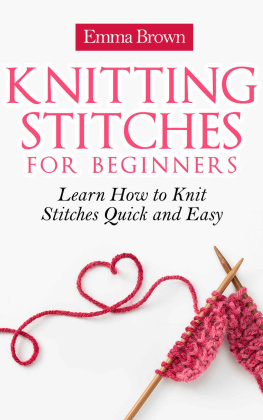
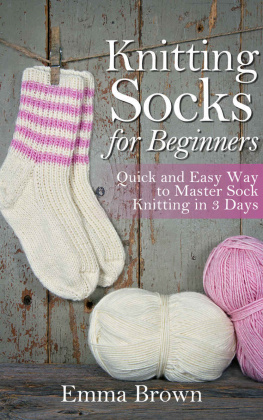
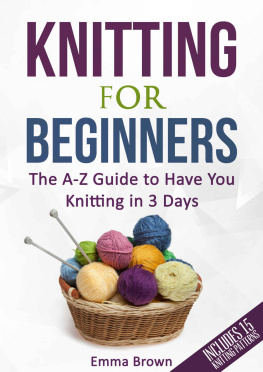
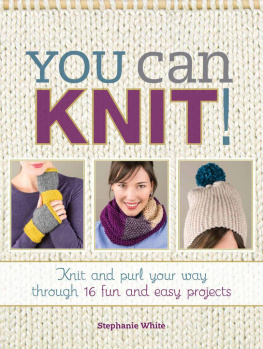
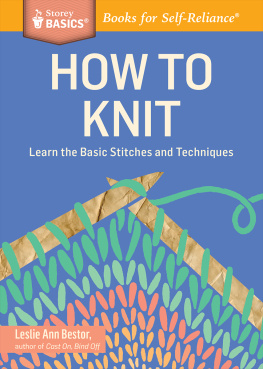
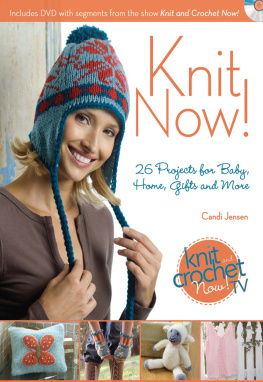
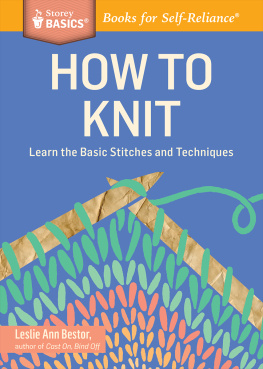
 Copyright 2010, 2012
Copyright 2010, 2012

 Introduction It always amazes me that so many lovely and intricate patterns can be made by using yarn, two knitting needles, and a combination of knit and purl stitches. I do not remember learning to knit; it seems that I always knew how. As a child, I would go to my mother with two pencils in hand, asking her to put stitches on the pencils so that I could knit.
Introduction It always amazes me that so many lovely and intricate patterns can be made by using yarn, two knitting needles, and a combination of knit and purl stitches. I do not remember learning to knit; it seems that I always knew how. As a child, I would go to my mother with two pencils in hand, asking her to put stitches on the pencils so that I could knit. 
